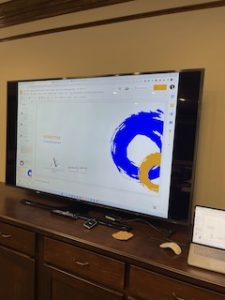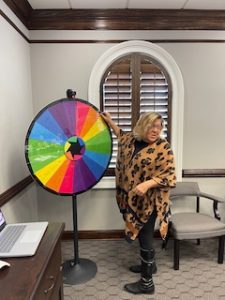Setting insurance producer sales goals can be overwhelming. Many agencies aren’t sure where to start. You don’t want to set a low goal and be unprofitable or set a lower-than-ideal expectation for producers.
On the flip side, you don’t want to put the insurance producer sales goal too high and make it too hard to attain.
There’s also another consideration when setting sales goals. Producers will likely have different roles and responsibilities. Some may service and sell, some only sell, and some producers only target opportunities over a certain threshold.
In this blog, we want to review how every agency can set insurance producer sales goals by having a clear roadmap that works for you.
APP Update
Setting Insurance Producer Sales Goals
As you start your journey in setting goals, you want to have a few things ready for review. This checklist identifies several factors that will help you establish successful sales goals. We’ll also share our recommendations for personal lines vs. commercial lines sales goals.
What Percentage of Their Time Is Spent On Sales
Insurance producers may wear many hats in many agencies. Some of these items include:
- Servicing and selling
- Servicing their book
- Being a mentor to other agents
- Handling renewals
- Handling remarkets or reshops
- Other roles and responsibilities
Prospecting vs. Inbound Leads
There is a difference between agencies that provide leads and expected prospect agents. Generally, inbound opportunities tend to be smaller, and outbound tend to be fewer in quantity but more significant in premium. In many agencies, the expectation is a combination of both prospecting and inbound.
Insurance Agent Experience
When you are a new producer, it can take some time to build your pipeline (but it can’t take too much time!) Insurance producer sales goals should be readjusted every year. Their sales goals should be adjusted as agents grow and build a pipeline and relationships.
Profitability
Producers must pay for themselves! While this can take a bit of time (generally 3-4 years), you must ensure that the producer is on track for profitability each year. We do recommend that this is an open and transparent conversation.
Alignment With Company Growth
Many agency owners miss the opportunity to tie producer goals directly into the agency growth goals. For example, if you wanted to grow your agency by 10%, you would need to identify the following:
- Retention Rate
- Estimated Premium Increases
- Your sales team needs goals that will fill the gap
If these goals are too high, you may need to look at investing in another producer or spreading the sales between the service team (cross-selling) and producers focused on new business.
Identifying A Target Client
Desperate sales agents bring in desperate clients. We do strongly recommend that agencies identify their target client. Some considerations include:
- Minimum Premium
- Minimum Coverage
- Policy Count
- It’s ok to say no to customers who aren’t the best fit for your agency!
We want to encourage every agency to find sales goals that work for you! When you take off-the-shelf sales goals you may be missing the mark.
“Setting goals is the first step in turning the invisible into the visible.” -Tony Robbins
How To Set Personal Lines Producer Sales Goals
When creating personal lines insurance producer goals, you want to consider the type of opportunities you are targeting. For many agencies they identify:
- Lender referrals
- Client referrals
- Web leads
- Paid leads
- Any other lead sources you may work on
In reality, paid and lender leads can have very different closing ratios. We do strongly recommend that every agency engages in tracking their closing ratios. You want to ensure that your department always runs a substantial profit margin!
Here is the reality, a producer that only focuses on new business (or mainly does!) should be hitting $45,000 in new premium sales every month. We, in fact, have many agencies hitting $60,000 or top months at $100,000 in new business premiums. We find many agencies can find these numbers shocking. However, these numbers are possible when you find the right person, process, and work to manage your time! These stats don’t happen by accident, but they do happen by intention.
In order to get to these numbers you may need to help scale the department. You may have someone who is handling file prep, quoting, post-binding, etc. In addition, the agents hitting these numbers have all invested in a CRM tool that helps them track, manage and automate their sales.
Setting Realistic Goals
When we work with agencies, we like to help them set realistic goals that they can work toward. Remember, there are a lot of factors we have listed on how to set goals. As part of our Agency Growth Program, we work with every agency to set realistic goals – with the idea that we will keep increasing the goals as the agency’s sales team strengthens.
Here is how we start the process:
- Identify the agency’s total growth target
- Determine the average retention rate
- Select a standard rate increase (this is often an estimate)
- Do the math – find what you would need to sell to hit the annual growth target
- Next, identify how many team members will write new business
- How much do you want to grow in each department
- What percentage of growth should come from sales or service
- The service team should have a cross-selling goal or a “tee up” goal for sales
- Just a note, everyone can generate an opportunity and get it into the hands of a sales agent!
- Now you can identify what the sales producers need to sell to hit your goal, but there is more!
- Once you have your number you want to identify who your sales agents are. Remember each one may have different tenure or types of leads they are working on! You can set your goals based on what the sales agents did last year and be sure to increase that number.
In personal lines, identify a few sales goals to focus on:
- The number of Quotes Per Month: personal lines start with opportunity. Personal insurance producers tend to be more inbound, but they should also be working on unsold quotes, lost customers, and referrals. Every personal sales agent should have control and the ability to add to their pipeline.
- Closing Ratio Goal: In sales, there are only two challenges: closing ratio and enough leads. The sales agent can control the closing ratio! Sales agents can control their closing ratio when they have the right process. Success for personal lines tends to be in the follow-up and asking for the agency’s business process. The challenge we see is that far too many agencies have a quoting process but no sales process. Our Agency Growth Training helps to fix this.
- New Business Sales Goal: I love setting revenue goals for all sales agents. However, if you are new to setting goals, revenue may be over complicated. In personal lines, commission rates can be all over the map. Premium is simple, but revenue is better! You want to set a monthly goal to hit for everyone.
Examples of Personal Insurance Producer Sales Goals
We wanted to share with you a sample of a monthly personal lines producer goal:
- Monthly Premium Goal: $45,000
- Closing Ratio: 50%
- Quotes: 75 Policy Quotes (this is 3.75 policy quotes per day!)
How To Set Commercial Lines Producer Sales Goals
Commercial line sales really should be split between inbound (call-in business) and producer-generated. Many agencies have producers also take calls in business, but we find that producers tend to aggressively wait for the phone to ring. This means they stop prospecting and become dependent on calls in business which tends to be lower in premium. We always recommend that agencies define their producer roles and lead types. For call-in business, you can follow the above personal lines goal strategy.
While many agencies struggle to find outbound commercial producers (they can tend to be as rare as unicorns), there are many great b2b sales professionals in many communities. You have to get creative, find them from other industries, and train them on insurance. The reality is you need someone who can generate opportunity – the agency can always help them with insurance.
For commercial sales agents, you may often have to invest in a decent base salary to attract them to your agency. Your commercial producer team needs to contribute to your overall agency goals, but most importantly, they need to be on track to generate an ROI. Early on (6 months), we recommend heavily focusing on activity goals.
It will be fine if a sales agent can get appointments and expiration dates! If they get stuck behind the desk, it’s generally a sign that the leader needs to address the producer to get them in alignment with activity goals.
“Motivation will almost always beat mere talent.” -Norman Ralph Augustine
For producers that are prospecting, we recommend that you set a premium or revenue minimum that they focus on. You do not want your producer farming business that you could quite possibly call in. Outbound producers need to be focused on generating opportunities from larger targets. For every region and agency, this target may be different. Agencies can generally start with $2500 in commission.
For commercial producers to be valuable to agencies they need to have a monthly goal of $7200 in commission revenue per month. Many agents are targeting higher than that. Newer producers generally need to be worked up to this level as they grow and build their pipeline.
In commercial lines, identify a few sales goals to focus on:
- Number of Appointments per Month: Commercial production is all about appointments. Commercial insurance producers need to generate activity. With appointments come expiration dates. Expiration dates fill the producer’s pipeline for the future. In most of the larger businesses, you need to work several weeks in advance. A ripe and rich pipeline is where every producer needs to focus.
- Application Goals: Once you have the expiration date, you need to work on them to submit the application. If you can work towards a target goal of applications to submit every month, hitting your monthly sales goal should not be an issue! If your commercial producers need sales training take a look at the APP Commercial Sales Course.
- New Business Sales Goal: Commercial sales agents should be targeting a revenue goal. The main reason is that states with Workers’ compensation policies those policies can be large but also have low commissions. You want your team looking to hit a dollar amount. In addition, commercial agents should really like money. Their commission is tied to revenue, not premium. Now, depending on the size of commercial agents you are targeting, you may want to lean on a quarterly goal. If they are whale hunting, they may not find a whale every month!
How To Handle When Producers Are Not Hitting Their Sales Goals
We see many agencies that hold on to non-producing producers for too long. Agencies love having producers and often struggle with accountability. For many agencies, the non-producing producers have strong ties in the community, and there is a fear that letting them go will leave a negative mark on the agency.
The reality is that producers must produce. It’s a math equation. Where many agencies struggle is a lack of transparency in expectations and tracking. To ensure you have the right producer team, you need to set clear goals, and starting with this blog; you can do that!
But what do you do if you have the tracking and clear goals and it’s just not working? Don’t fear accountability. Remember, clarity is kind – do not sugarcoat the situation! We believe in a three-strike rule. Every goal missed is a strike at any point in time in a rolling 12 months.
There is a three-strike rule; after each strike, there is a written warning and action plan that the agency works on with the producer. The goal is to alert them they are off track and invest in them to bring them on track. After three strikes, they should be on a performance improvement plan that could lead to termination.
While these discussions are challenging, they are critical. Producers who aren’t producing are taking up valuable agency resources, and agencies need to address this upfront and sooner than later.










